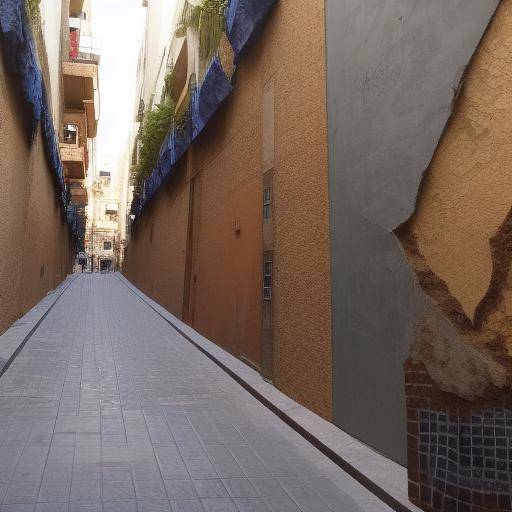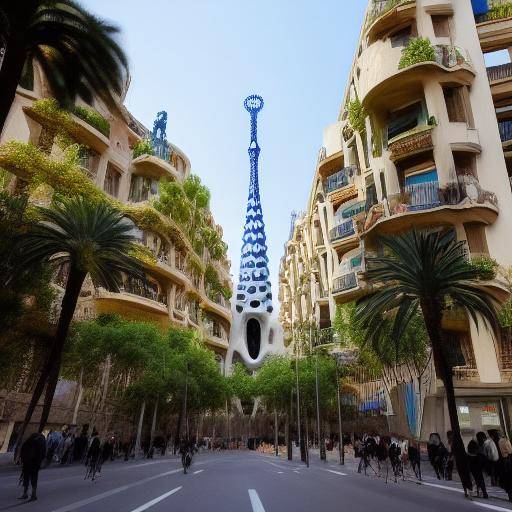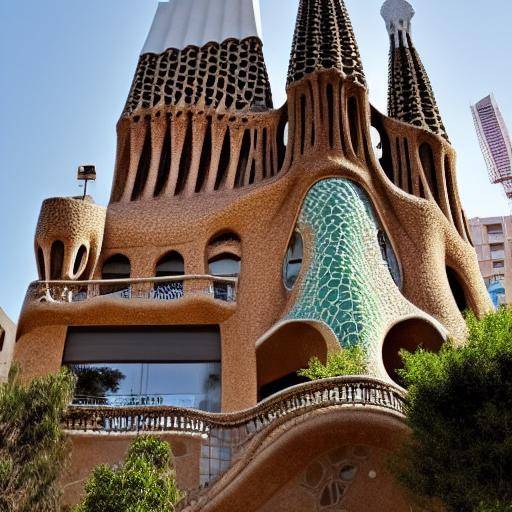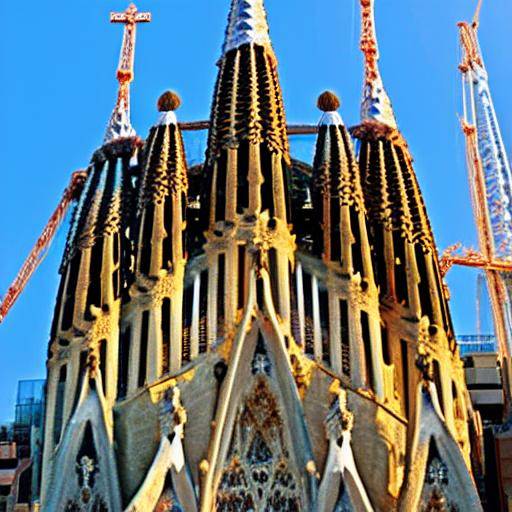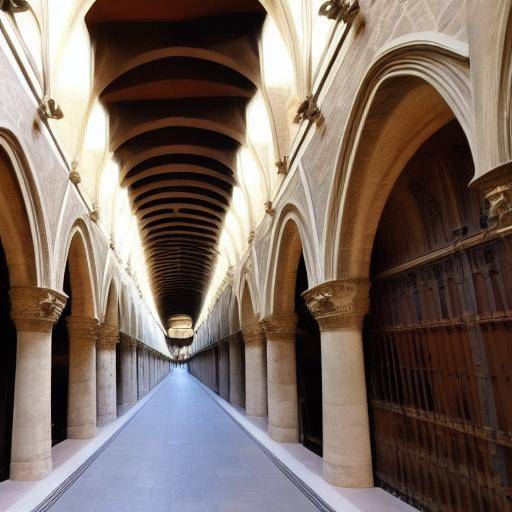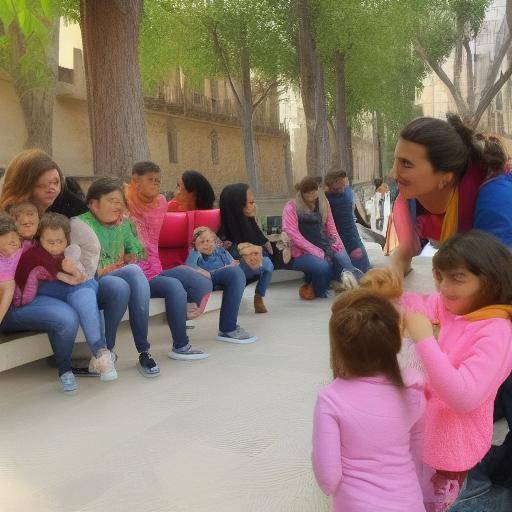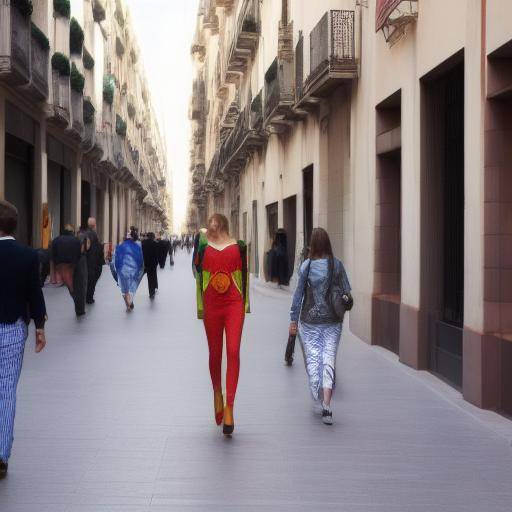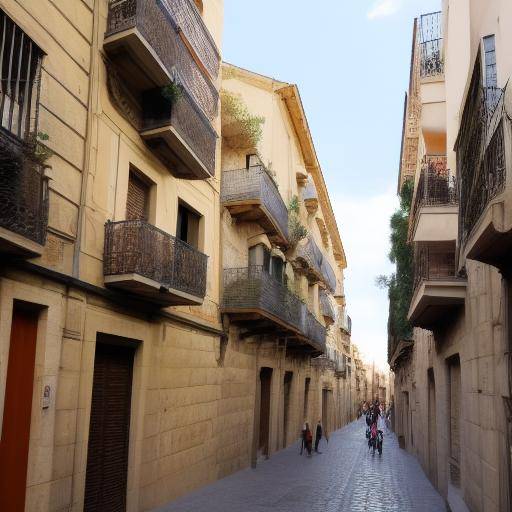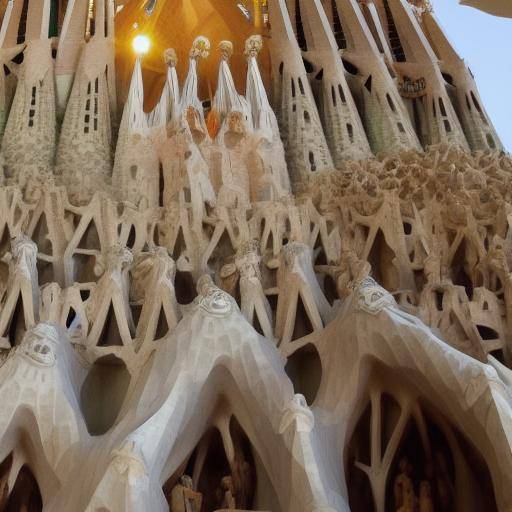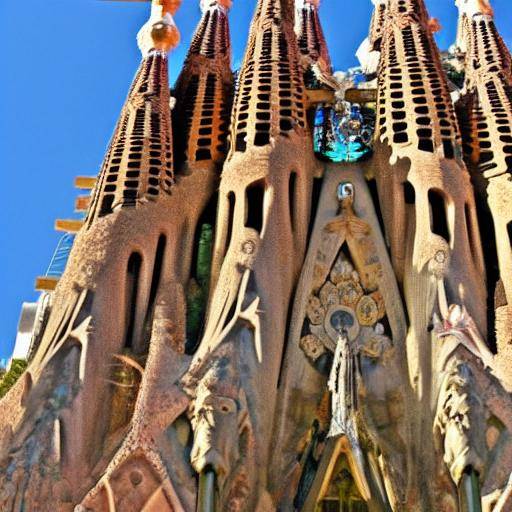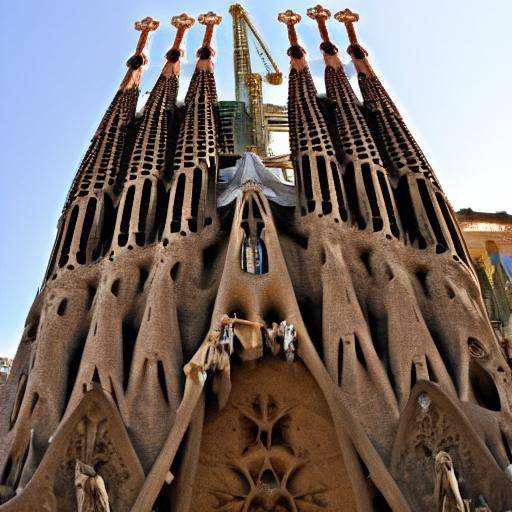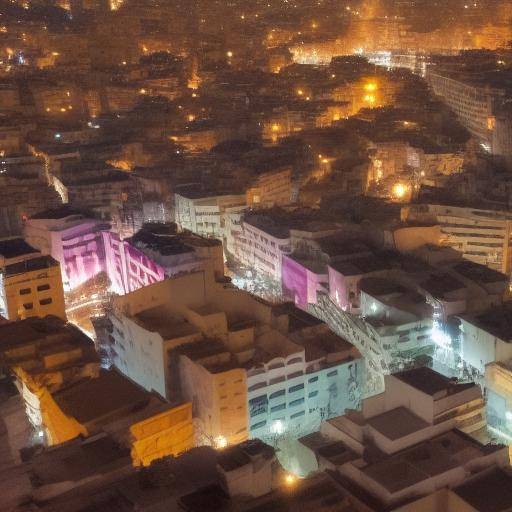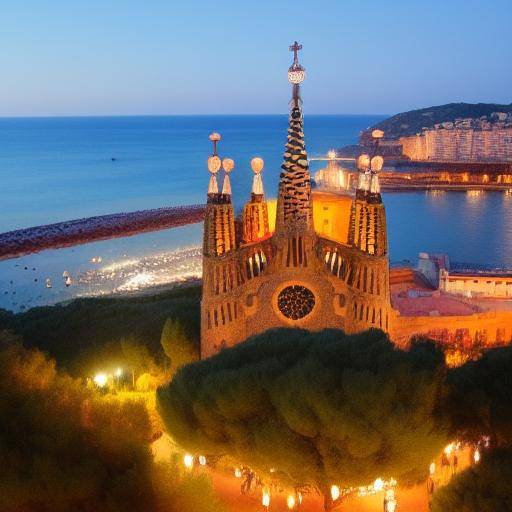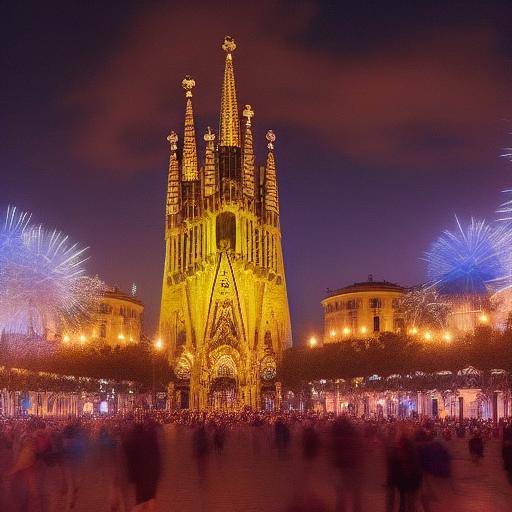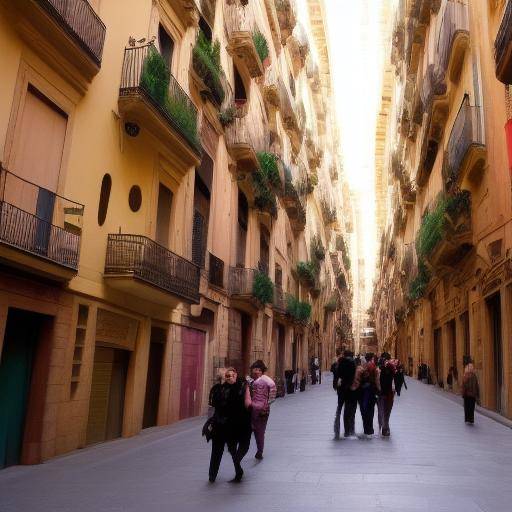
The Gothic Quarter of Barcelona is a literary gem that has inspired writers throughout the centuries. In this article, we will explore the fascinating relationship between the Gothic Quarter, Barcelona and Catalan literature. From its historical origins to current trends, we will discover how these elements intertwine to give life to a unique experience for lovers of literature and culture. Join us on a walk through the cobbled streets and the most literary corners of this historic area of the city.
Introduction
The Gothic Quarter of Barcelona is a historic treasure that has been the scene and source of inspiration for countless writers throughout the centuries. Its narrow cobbled streets, imposing Gothic buildings and unique atmosphere have captivated creative minds, providing a perfect setting for literary narratives of all kinds.
History and Background
The Gothic Quarter, also known as the Barri Gòtic in Catalan, is the historical heart of Barcelona. Its origins date back to the Roman era, when the city, known as Barcino, was founded in the 1st century BC by the Roman Emperor César Augusto. Over the centuries, the neighborhood witnessed the influence of different cultures and civilizations, which has left an indelible mark on its architecture, character and spirit.
Catalan literature has been an integral part of the identity of the Gothic Quarter. From medieval epopeyas to modern masterpieces, this neighborhood has been a vital setting for the creation and preservation of Catalan literature. Writers like Joan Maragall, Josep Pla, Mercè Rodoreda and Manuel de Pedrolo, among many others, have found in their streets and squares the muse perfect for their creations, which has enriched the literary legacy of the city.
Analysis in Deep
The Gothic Quarter of Barcelona has not only been a source of inspiration for writers, but has also exerted a significant influence on Catalan literature. Its unique atmosphere, rich history and blend of architectural styles have served as intrinsic narrative elements in numerous literary works.
Catalan literature has flourished in the context of the Gothic Quarter, covering genres ranging from lyric poetry to the contemporary novel. The presence of bookstores, editorials and cultural spaces in the neighborhood has helped to foster literary creativity and promote dialogue between writers, readers and academics.
Comprehensive review
The Gothic Quarter of Barcelona has become a meeting point for literature, history and culture. Visitors and residents alike have the opportunity to immerse themselves in a unique literary environment that celebrates both the past and the present of Catalan literature.
The interaction between the Gothic Quarter, Barcelona and Catalan literature has led to a vibrant cultural dynamic that continues to evolve and adapt to contemporary trends. The combination of literary tradition with creative innovation has placed this neighborhood at the center of the Catalan literary scene, offering a space of exploration, reflection and expression for writers and readers alike.
Comparative analysis
The Gothic Quarter, Barcelona and Catalan literature share a deep connection that manifests itself in their similarities and disparities. The way in which each of these elements interacts with one another reveals the complex interrelationship between history, cultural identity and literary creativity.
While the Gothic Quarter provides an unprecedented historical and architectural backdrop, Barcelona provides a modern and cosmopolitan perspective that enriches Catalan literary production. This combination of the ancient and contemporary provides an enriching context for Catalan literature, allowing it to nurture from different influences and perspectives.
Practical Tips and Accessible Tips
If you are interested in exploring the intersection between the Gothic Quarter, Barcelona and Catalan literature, here are some practical tips to get the most out of your experience:
- Visit the independent bookstores of the Gothic Quarter, where you will find a wide selection of Catalan literature and works of local writers.
- Participate in literary and tertulian events that take place in the neighborhood, where you can interact with authors, critics and enthusiasts of Catalan literature.
- Explore the cafés and literary bars of the Gothic Quarter, emblematic spaces that have been a source of inspiration for many writers over the years.
Industry Perspectives and Expert Reviews
Catalan literature experts highlight the importance of the Gothic Quarter as a fundamental scenario in the literary narrative of Barcelona. Its alleyways, squares and historic buildings have served as a backdrop for countless stories, giving Catalan literature a vivid and multifaceted context.
According to Nuria Amat, renowned Catalan writer, "The Gothic Quarter is a microcosm that encapsulates the very essence of Catalan literature. Its contrasts and artistic wealth are reflected in the works that have emerged from its streets and monuments, becoming a source of inexhaustible inspiration for writers of all time."
Cases of Study and Applications in Real Life
The impact of the Gothic Quarter on Catalan literature is reflected in numerous cases of study that illustrate its relevance and influence. Throughout the centuries, writers and artists have found in this environment a space conducive to creation, reflection and literary experimentation.
An outstanding case is that of the novelist Mercè Rodoreda, whose work "La plaça del Diamant" (La plaza del Diamante) is set in the Gothic Quarter and has been acclaimed as a classic of the Catalan literature of the twentieth century. The way Rodoreda captures the unique atmosphere of the neighborhood and integrates it into his narrative is an eloquent example of the profound influence of the environment in literary production.
Future Trends and Predictions
The future of the Gothic Quarter, Barcelona and Catalan literature is intrinsically linked to the evolution of the city, its cultural identity and its literary scene. As Barcelona continues to be an epicenter of creativity and artistic expression, the Gothic Quarter is likely to remain a beacon of inspiration for future generations of writers and readers.
Catalan literature is expected to continue to flourish in the context of the Gothic Quarter, nourishing itself from the literary and cultural heritage of the area and at the same time embracing new forms of expression and literary diffusion. This synergy between past and present, tradition and innovation, promises to open new horizons for Catalan literature in the unique context of the Gothic Quarter of Barcelona.
Conclusions
The Gothic Quarter of Barcelona is much more than a network of historical streets and ancient buildings; it is a living literary landscape that has fed the creativity of writers and poets for centuries. His influence in Catalan literature is undeniable, and his legacy endures as a testimony to the profound relationship between the city, its history and literary expression.
As you walk through the Gothic Quarter, you unfold before us a fascinating literary universe, where history finds its voice in the words of past and present writers. The connection between the Gothic Quarter, Barcelona and Catalan literature is a vibrant testimony of the transformative power of the places and its ability to inspire and perpetuate the human narrative.
Frequently asked questions
1. What is the importance of the Gothic Quarter in Catalan literature?
The Gothic Quarter has historically been a meeting point for writers, poets and artists, serving as a source of inspiration and stage for countless literary works in Catalan. Its rich history and unique atmosphere have influenced the creativity of generations of Catalan writers.
2. What Catalan writers have found inspiration in the Gothic Quarter?
Numerous Catalan writers have been influenced by the Gothic Quarter, including Joan Maragall, Josep Pla, Mercè Rodoreda and Manuel de Pedrolo, whose works have captured the essence and atmosphere of the neighborhood in a remarkable way.
3. How can I explore the connection between the Gothic Quarter and Catalan literature during my visit to Barcelona?
During your visit to Barcelona, you can immerse yourself in Catalan literature visiting the bookstores and literary spaces of the Gothic Quarter, participating in literary events, and exploring the streets and squares that have inspired writers throughout the centuries.
4. What are some Catalan literary works set in the Gothic Quarter?
"La plaça del Diamant" (La plaza del Diamante) de Mercè Rodoreda is an emblematic example of a Catalan literary work that takes place in the Gothic Quarter. This novel has captured the essence of the neighborhood and left a lasting mark in Catalan literature.
5. How has the influence of the Gothic Quarter evolved in Catalan literature over time?
Over the centuries, the influence of the Gothic Quarter in Catalan literature has evolved, adapting to literary and cultural tendencies. However, its essence as a source of inspiration and literary scenario has endured, nourishing contemporary literary creation.
6. What initiatives are being carried out to preserve the connection between the Gothic Quarter and Catalan literature?
Various cultural organizations and entities in Barcelona have promoted initiatives to preserve the connection between the Gothic Quarter and Catalan literature, organizing literary events, promoting the reading of Catalan works and highlighting the importance of the neighborhood in the literary scene of the city.
With this panorama, we hope that this article has provided an enriching insight into the fascinating literary world of the Gothic Quarter of Barcelona and its deep relationship with Catalan literature. By observing the centuries-old stones and winding alleys of this iconic neighborhood, we cannot help but feel the living presence of the words that have been born of this unique environment.

